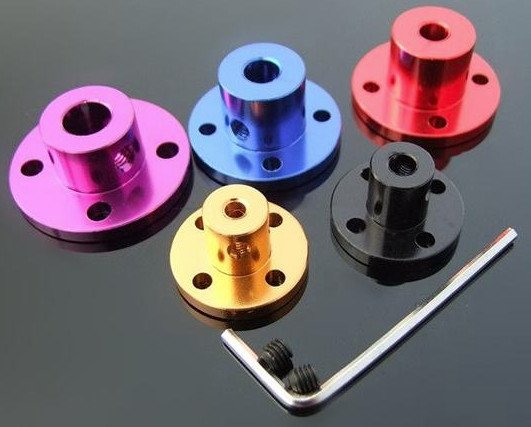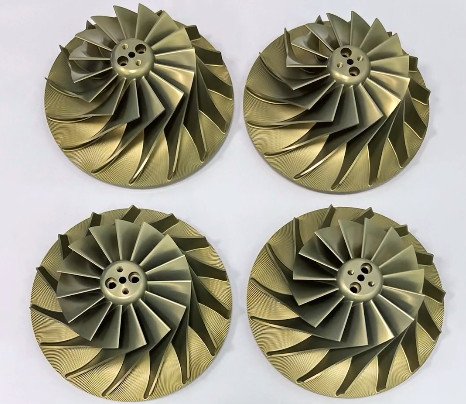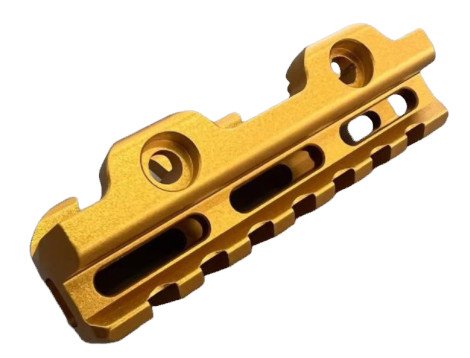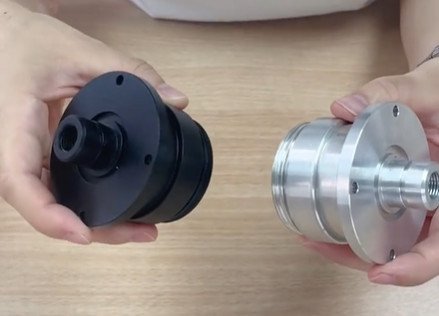This guide offers a comprehensive overview of aluminum surface finishing techniques used in CNC machining, manufacturing, and industrial applications. It details processes, technical specifications, and practical considerations for achieving optimal surface quality. The content is designed for engineers, manufacturers, and designers aiming to enhance aluminum part performance and aesthetics.
Overview of Aluminum Surface Finishing
Aluminum surface finishing involves applying treatments or coatings to improve durability, corrosion resistance, appearance, and functionality. These processes are vital in industries like aerospace, automotive, electronics, and construction. Finishing techniques modify surface properties to meet requirements such as wear resistance, electrical conductivity, or aesthetic appeal. The choice of finish depends on the part’s purpose, environmental exposure, and manufacturing constraints.

Common Aluminum Surface Finishing Techniques
Numerous surface finishing methods are available for aluminum, each with distinct processes, equipment, and outcomes. Below is a detailed examination of widely used techniques, including technical parameters and applications.
Anodizing
Anodizing is an electrochemical process that forms a protective oxide layer on aluminum surfaces, enhancing corrosion resistance, wear resistance, and providing a base for dyeing or sealing. The process involves immersing the part in an electrolyte bath and applying an electric current.
Process Parameters:
- Electrolyte: Sulfuric acid (Type II: 10-20% concentration; Type III: 15-25%)
- Voltage: Type II (12-18V), Type III (30-120V)
- Current Density: 1-2 A/dm² (Type II), 2-3 A/dm² (Type III)
- Temperature: 18-22°C (Type II), 0-5°C (Type III)
- Coating Thickness: Type II (5-25 µm), Type III (25-100 µm)
- Processing Time: 20-60 minutes (Type II), 30-120 minutes (Type III)
Types of Anodizing:
- Type II (Clear Anodizing): Produces a thin, transparent oxide layer (5-25 µm) for decorative applications or moderate corrosion resistance, used in consumer electronics or architectural components.
- Type III (Hard Anodizing): Creates a thicker, harder layer (25-100 µm) for industrial applications like aerospace components or machinery parts in harsh environments.
- Dye Anodizing: Adds color to the porous oxide layer, used in decorative products like automotive trim or consumer goods.
Applications: Anodizing is used in aerospace for structural components, automotive for engine parts, and electronics for casings due to its durability and metallic appearance.
Powder Coating
Powder coating applies a dry powder to the aluminum surface, cured under heat to form a hard, protective layer, offering excellent corrosion resistance and color options.
Process Parameters:
- Powder Type: Polyester, epoxy, or polyurethane-based powders
- Application Method: Electrostatic spray
- Curing Temperature: 180-200°C
- Curing Time: 10-20 minutes
- Coating Thickness: 50-100 µm
- Surface Preparation: Cleaning and chromate or phosphate pretreatment
Applications: Common in architectural applications (e.g., window frames, railings), automotive parts, and outdoor furniture due to durability and UV resistance.
Electroplating
Electroplating deposits a metal layer (e.g., nickel, chrome) onto aluminum to enhance appearance, corrosion resistance, or wear resistance using an electric current.
Process Parameters:
- Plating Material: Nickel, chromium, or zinc
- Electrolyte: Nickel sulfate (nickel plating), chromic acid (chrome plating)
- Current Density: 1-5 A/dm²
- Temperature: 40-60°C (nickel), 45-55°C (chrome)
- Coating Thickness: 5-50 µm (decorative), 50-200 µm (hard chrome)
- Processing Time: 10-60 minutes
Applications: Used for automotive trim (decorative chrome), industrial machinery (hard chrome), and electronic connectors (nickel for conductivity).
Polishing
Polishing creates a smooth, reflective surface by mechanically abrading aluminum, often for aesthetics or as a pretreatment for other finishes.
Process Parameters:
- Abrasives: Aluminum oxide, diamond paste, or silicon carbide
- Equipment: Buffing wheels, vibratory tumblers, or hand tools
- Surface Roughness (Ra): 0.1-0.8 µm (mirror finish), 0.8-3.2 µm (satin finish)
- Processing Time: 10-60 minutes
Applications: Used in decorative components (e.g., automotive trim, jewelry) and optical equipment requiring high reflectivity.
Sandblasting
Sandblasting propels abrasive particles to create a matte or textured surface, often used for surface preparation or aesthetic texture.
Process Parameters:
- Abrasive Media: Glass beads, aluminum oxide, or silica sand
- Pressure: 40-100 psi
- Surface Roughness (Ra): 2.5-6.3 µm
- Processing Time: 5-30 minutes
Applications: Used in aerospace for surface preparation, automotive for matte finishes, and architectural panels for texture.
Brushed Finish
Brushed finishing involves mechanically abrading the surface with abrasive belts or brushes to create a linear, satin-like texture.
Process Parameters:
- Abrasives: Non-woven pads or abrasive belts (120-320 grit)
- Equipment: Linear sanding machines or hand tools
- Surface Roughness (Ra): 0.4-1.6 µm
- Processing Time: 10-40 minutes
Applications: Common in appliances, elevator panels, and decorative hardware for its aesthetic appeal and fingerprint resistance.
Chromate Conversion
Chromate conversion applies a chemical coating to enhance corrosion resistance and improve adhesion for subsequent coatings like paint.
Process Parameters:
- Chemical Solution: Chromate-based (1-5 g/L)
- Temperature: 20-40°C
- Processing Time: 1-2 minutes
- Coating Thickness: 0.1-1 µm
Applications: Used in military and aerospace for parts requiring corrosion protection and paint adhesion.
As Machined, Mill Finish, and Clear Coating
As Machined: The raw surface after CNC machining, with visible tool marks, is cost-effective for non-aesthetic applications.
Mill Finish: The default surface from aluminum extrusion or rolling, with minor imperfections, suitable for further finishing.
Clear Coating: A transparent protective layer that preserves the natural aluminum appearance while adding corrosion resistance.
Applications: As Machined and Mill Finish are used in structural or non-visible parts; Clear Coating is used in architectural or decorative elements.
Comparison of Aluminum Surface Finishes
The following table compares key aluminum surface finishing techniques based on performance and applications.
| Finish Type | Description | Benefits | Common Applications |
|---|---|---|---|
| As Machined | The raw state of aluminum after machining, showing tool marks. | Cost-effective, no additional finishing required. | Applications without strict finish needs. |
| Anodizing | An electrochemical process that creates a protective oxide layer. | Increases corrosion resistance, wear resistance, aesthetic appeal. | Aerospace, automotive, consumer products. |
| Brushed Finish | A mechanical finish that imparts a uniform, satin-like texture. | Aesthetic appeal with reduced glare; hides fingerprints. | Decorative applications, appliances. |
| Polished Finish | A highly reflective finish achieved through polishing. | Excellent aesthetic quality; enhances corrosion resistance. | High-end consumer products, jewelry. |
| Powder Coating | A dry finishing process that applies a protective and decorative layer. | Durable, resistant to chipping, scratching, fading; various colors. | Outdoor furniture, automotive parts. |
| Chromate Conversion | A chemical treatment that provides corrosion resistance and improves paint adhesion. | Enhances corrosion resistance; good base for painting. | Military and aerospace applications. |
| Electroplating | A process that deposits a layer of metal onto the aluminum surface. | Improves wear resistance, corrosion resistance, aesthetic appeal. | Decorative items, electrical components. |
| Mill Finish | The default finish from the manufacturing process, with some imperfections. | Economical; suitable for further finishing like painting. | Structural applications, non-visible parts. |
| Hard Anodizing | A thicker anodized layer for enhanced durability and wear resistance. | Superior hardness and corrosion resistance; ideal for high-wear uses. | Engine components, tools. |
| Clear Coating | A transparent layer applied over the aluminum surface. | Protects underlying finish while maintaining original appearance. | Decorative applications, architectural elements. |
| Sandblasting | Propels abrasive particles to create a matte or textured surface. | Uniform texture; ideal for surface preparation or aesthetic matte finish. | Aerospace, automotive, architectural panels. |
| Micro-Arc Oxidation (MAO) | Electrochemical process creating a thick ceramic-like oxide layer on aluminum through high-voltage electrical discharges. | Enhanced hardness, corrosion resistance, wear protection; customizable surface properties. | Aerospace components, automotive parts, medical devices, electronic housings. |
Factors Influencing Finish Selection
Selecting the appropriate surface finish requires evaluating several factors to ensure compatibility with the part’s function and environment:
Environmental Exposure: Parts in harsh conditions (e.g., saltwater, chemicals) require corrosion-resistant finishes like hard anodizing or powder coating. Indoor applications may use brushed finishes or clear coating.
Mechanical Requirements: High-wear environments benefit from hard anodizing or electroplating (hard chrome). Decorative parts may use polishing or brushed finishes.
Aesthetic Requirements: Consumer products or automotive trim may use dye anodizing, powder coating, or polished finishes for specific colors or gloss.
Cost and Production Constraints: As Machined or Mill Finish are cost-effective for small batches, while anodizing and powder coating are scalable. Electroplating may increase costs due to pretreatment.
Substrate Alloy: Alloys like 6061 are ideal for anodizing, while 7xxx series may require special pretreatments.
Surface Preparation for Finishing
Proper surface preparation ensures high-quality finishes. Common steps include:
- Cleaning: Removes oils, dirt, and oxides using alkaline or acid cleaners.
- Etching: Creates a uniform surface with sodium hydroxide or acid solutions.
- Desmutting: Eliminates residual oxides with nitric acid.
- Pretreatment: Applies conversion coatings (e.g., chromate) to enhance adhesion.
Preparation Parameters:
| Step | Chemical/Method | Concentration | Temperature | Time |
|---|---|---|---|---|
| Cleaning | Alkaline cleaner | 5-10% | 50-70°C | 1-5 min |
| Etching | Sodium hydroxide | 5-15% | 40-60°C | 1-3 min |
| Desmutting | Nitric acid | 20-30% | 20-30°C | 30-60 sec |
| Pretreatment | Chromate conversion | 1-5 g/L | 20-40°C | 1-2 min |
Quality Control and Testing
Quality assurance involves testing methods such as:
- Coating Thickness Measurement: Uses eddy current or magnetic gauges (e.g., 5-100 µm for anodizing).
- Adhesion Testing: Evaluates coating bond strength (ASTM D3359).
- Corrosion Resistance Testing: Conducts salt spray tests (ASTM B117, 500-1000 hours for anodized surfaces).
- Surface Roughness Measurement: Uses profilometers (Ra 0.1-6.3 µm).
- Color and Gloss Testing: Employs spectrophotometers or gloss meters.
Applications Across Industries
Aluminum surface finishes serve various industries:
- Aerospace: Hard anodizing, sandblasting, chromate conversion for structural parts.
- Automotive: Powder coating for wheels, electroplating for trim.
- Electronics: Anodizing for casings, electroplating for connectors.
- Construction: Powder coating, clear coating for architectural elements.
- Consumer Goods: Polished or brushed finishes for appliances, jewelry.
Conclusion
Aluminum surface finishing enhances durability, aesthetics, and functionality across industries. By understanding processes like anodizing, powder coating, electroplating, polishing, sandblasting, and others, manufacturers can select optimal finishes. Proper surface preparation and quality control ensure consistent results, while environmental, mechanical, and aesthetic factors guide selection. This guide provides a technical resource for professionals optimizing aluminum parts.



